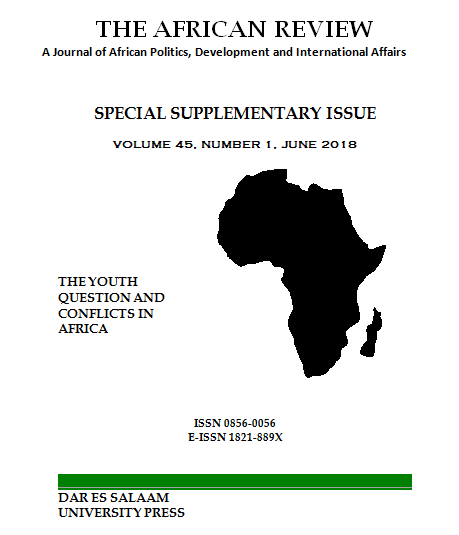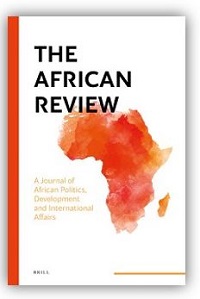Persistence of Youth Gang Violence in South Africa
Abstract
In South Africa, gang violence continues unabated particularly in black and coloured
townships. The question addressed in this paper is why youth continue to be involved in
gang violence despite South Africa being deemed the most developed African country.
The response to this question goes just beyond economic reasons and includes young
men and the expression of their masculine power. In this paper we reveal the ways in
which young men continue to be involved in gang violence and their consequences. The
paper is based on an ethnographic study from 2017 to 2018. It draws on two black
townships of Gugulethu and Nyanga East in Cape Town South Africa.
Keywords: South Africa, Gang, Youth, Violence, Masculinity
Godfrey Maringira, Senior Postdoctoral, University of Western Cape, Email: gmaringira@gmail.com
Tyanai Masiya, Lecturer, University of Pretoria, Email: masiyat2008@gmail.com
References
Altbeker, A. 2007. A country at war with itself. South Africa ' s crisis of crime,
Johannesburg: Jonathan Ball Publishers.
Bowers Du Toit, N.F. 2014. "Gangsterism on the Cape Flats: a challenge to engage the
powers ", HTS Teologiese Studies/Theological Studies, 70(3) 1-7
Cooper, A. and Ward, C.L. 2012. "Intervening with youths in gangs". In C. L. Ward, A.
van der Merwe and A. Dawes, eds. Youth violence sources and solutions in
South Africa. : Cape Town: University of Cape Town Press.
Daniels, D and Adams, Q. 2010. "Breaking with Township Gangsterism: The Struggle for
Place and Voice", African Studies Quarterly, 11(4): 45-57
Decker, S. and Van Winkle, B. 1996. Life in the Gang: Friends, family and Violence.
Cambridge: Cambridge University Press.
Decker, S.H and Pyrooz, D.C. 2010. Gang violence around the world: context, culture
and country, in G. McDonald (ed.) Small Arms Survey. London: Oxford
University Press.
Foster, D. 2012. Gender, class, race and violence, in C. L. Ward, A. van der Merwe and
A Dawes (ed). Youth violence sources and solutions in South Africa. Cape Town,
University of Cape Town Press.
Klein, M.W, Weerman, F.M and Thornberyy, T.P. 2010. "Street Gang Violence in
Europe", European Journal of Criminology, 3 (4): 413 €“437.
Krinsky, J. and Crossley, N.2014. "Social Movements and Social Networks:
Introduction", Social Movement Studies, 13 (1): 1 €“21.
Kynoch G.1999. "From the Ninevites to the Hard Livings gang: Township gangsters and
urban violence in twentieth-century", South Africa, African Studies, 58(1): 55-
Legget, T. 2005. Terugskiet (returning fire): Growing up on the street corners of
Manenberg, South Africa, in Dowdney, L (ed.), Neither war nor peace:
International comparisons of children and youth in organised armed violence.
Rio de Janeiro: Viva Rio/ISER/ IANSA, 296-315
Magidi, M.D.2014. "Experiences of gangsterisim by non-gang affiliated high schools
learners", Master ' s Thesis: University of the Western Cape.
Mfecane, S. 2016. "Ndiyindoda (I am a man): theorising Xhosa masculinity",
Anthropology Southern Africa, 39 (3): 204-2014
Mncube, V. and Madikizela-Madiya, N. 2014. "Gangsterism as a Cause of Violence in
South African Schools: The Case of Six Provinces", Journal of Sociology and
Anthropology, 5(1): 43-50.
Mncube, V. and Steinmann, C. 2014. "Gang-related Violence in South African Schools",
Journal of Social Science, 39(2): 203-211.
Ncontsa, N.V. and Shumba, A. 2013. "The nature, causes and effects of school violence
in South African high schools", South African Journal of Education, 33(3): 671-
Pinnock, D. 1997. Gangs, rituals and rites of passage. Cape Town: African Sun Press
with the Institute of Criminology, University of Cape Town
Pinnock, D. 2016. Gang Town, Cape Town: Tafelberg.
Wegner, L. 2016. "Meaning and purpose in the occupations of gang-involved young
men in Cape Town, South African", Journal of Occupational Therapy, 46 (1): 53-
Downloads
Published
Issue
Section
License
Copyright © by Department of Political Science and Public Administration, University of Dar es Salaam
All rights reserved. No part of this publication may be reproduced or transmitted in any form or by any means, electronic or mechanical, including photocopying, recording, or any information storage or retrieval system, without permission in writing from the publisher, except for short extracts in fair dealing, for research or private study, critical scholarly review or discourse with an acknowledgement.
The African Review: A Journal of African Politics, Development and International Affairs [ISSN 0856-0056 (Print) & ISSN 1821-889X (Online)] is published bi-annually, June and December by the Department of Political Science and Public Administration, University of Dar es Salaam, P.O. Box 35042 €“ Dar es Salaam €“ Tanzania



